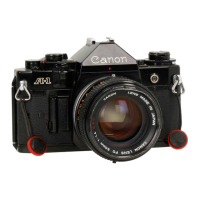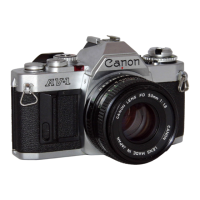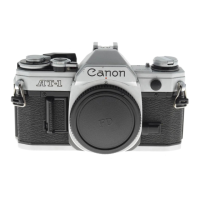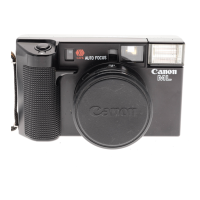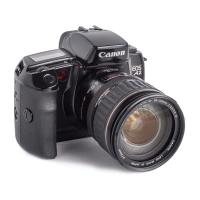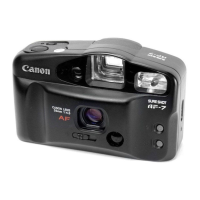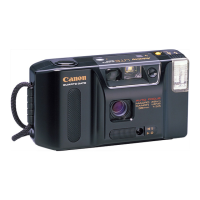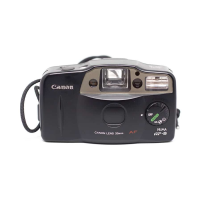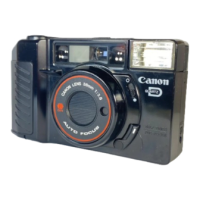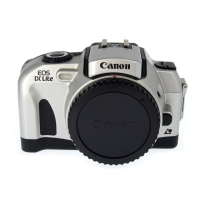ing Situations)
2.
Adjusting
the
ISO/ASA
Sometimes,
in
a theater
or
concert
hall,
for
instance, where
it
is
quite dark, the
AE-l
PROGRAM's
meter
may be overinfluenced by
the darkness and your subject will come
out
too
light.
To
expose
your
subject correctly,
tum
the
ISO
/
ASA
film speed lever to a higher number.
Each
full step on
the
ISOI
ASA
film speed scale
equals one f/ stop.
If
ISO/
ASA
200
film is
loaded,
for
instance, and you turn the lever
to
ISO
I
ASA
400
,
your
subject will receive one
fl
stop
less exposure. Exactly
how
much higher
you
should set the ISOI
ASA
film
speed depends
on
the situation.
To
be on
the
safe side, you
may
wish
to
bracket the exposure
(see
"Note
#2," next page) .
55
3. Manual
Override
Instead
of
using the
AE
lock
switch
or
changing
the ISOI
ASA,
you can also make
an
exposure
correction by canceling
AE
photography
.
When
you
do
this, you will
be
setting
both
shutter
speed and aperture by yourself. This is called
manual override and
is
useful whenever you
want
to
set a
different
aperture than the one the
AE-l
PROGRAM
would
select automatically
in
AE.
Note
Just
as
doubling the ISO/
ASA
will underexpose the
picture one fl
stop
, halving it (setting the lever to
ISOI
ASA
100
for
ISOI
ASA
200
film) will over-
expose the picture one f/stop.
Following exposure,
do
not
forget
to
reset
the
film
speed lever
to
the correct ISOI
ASA
film speed, or
all following frames will be incorrectly exposed!

